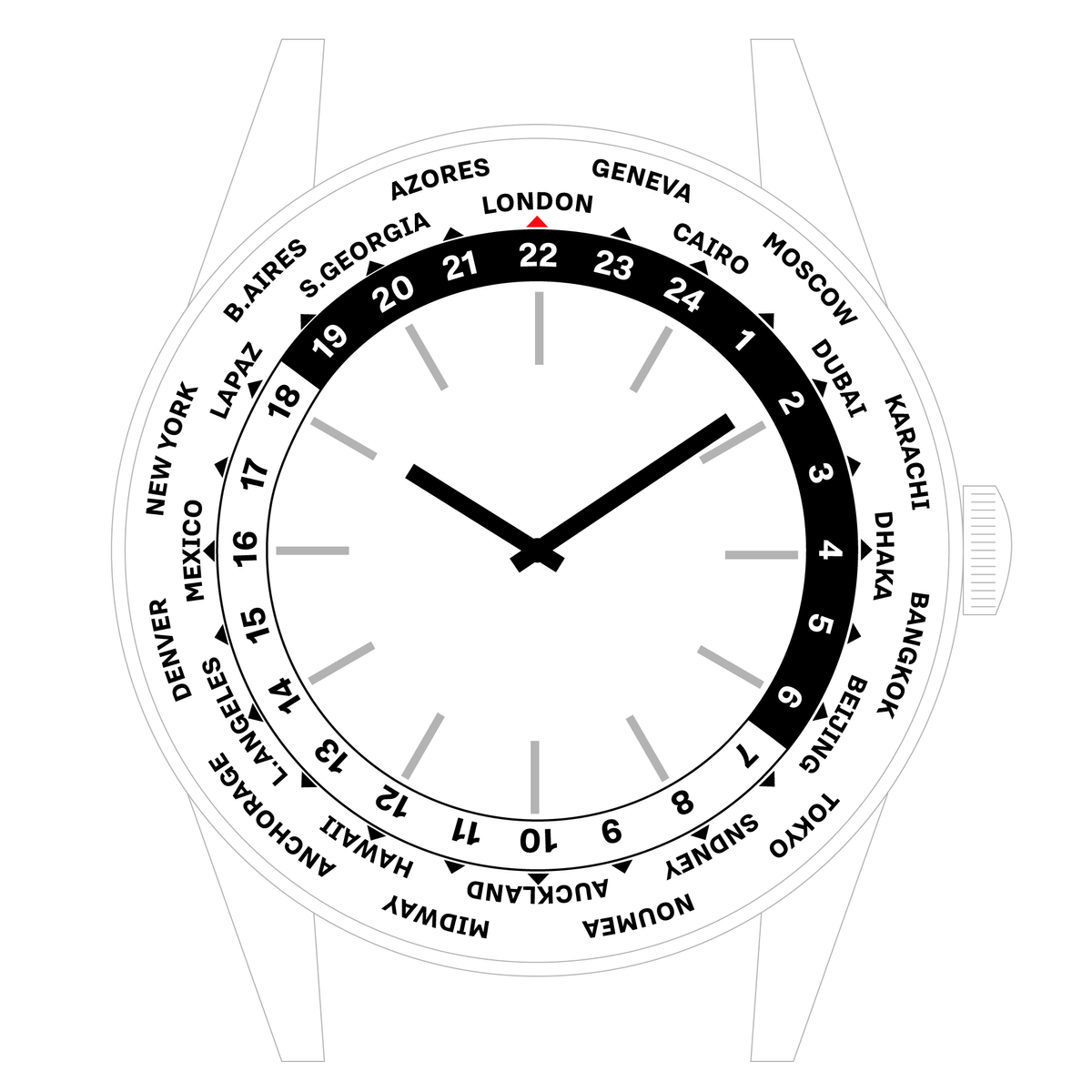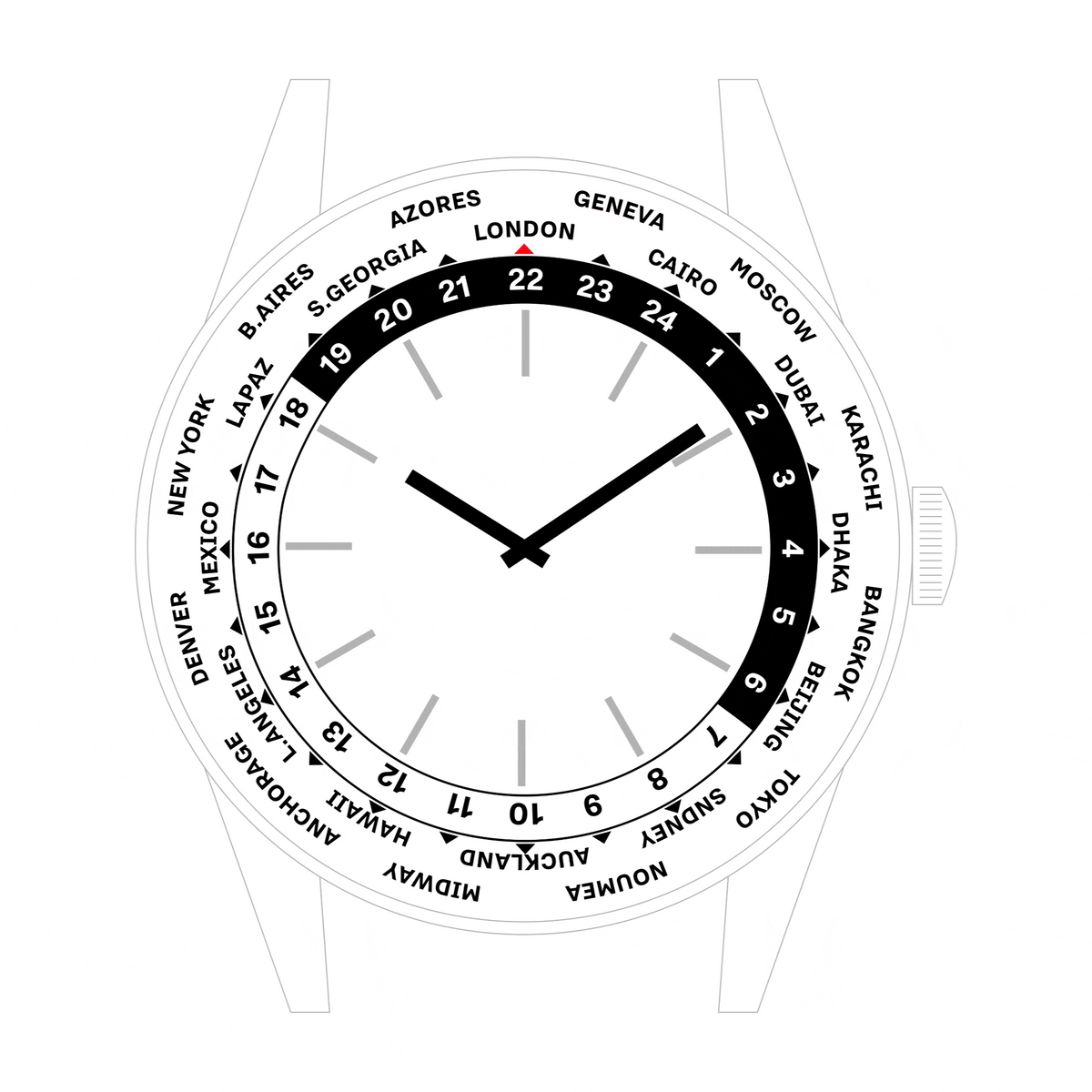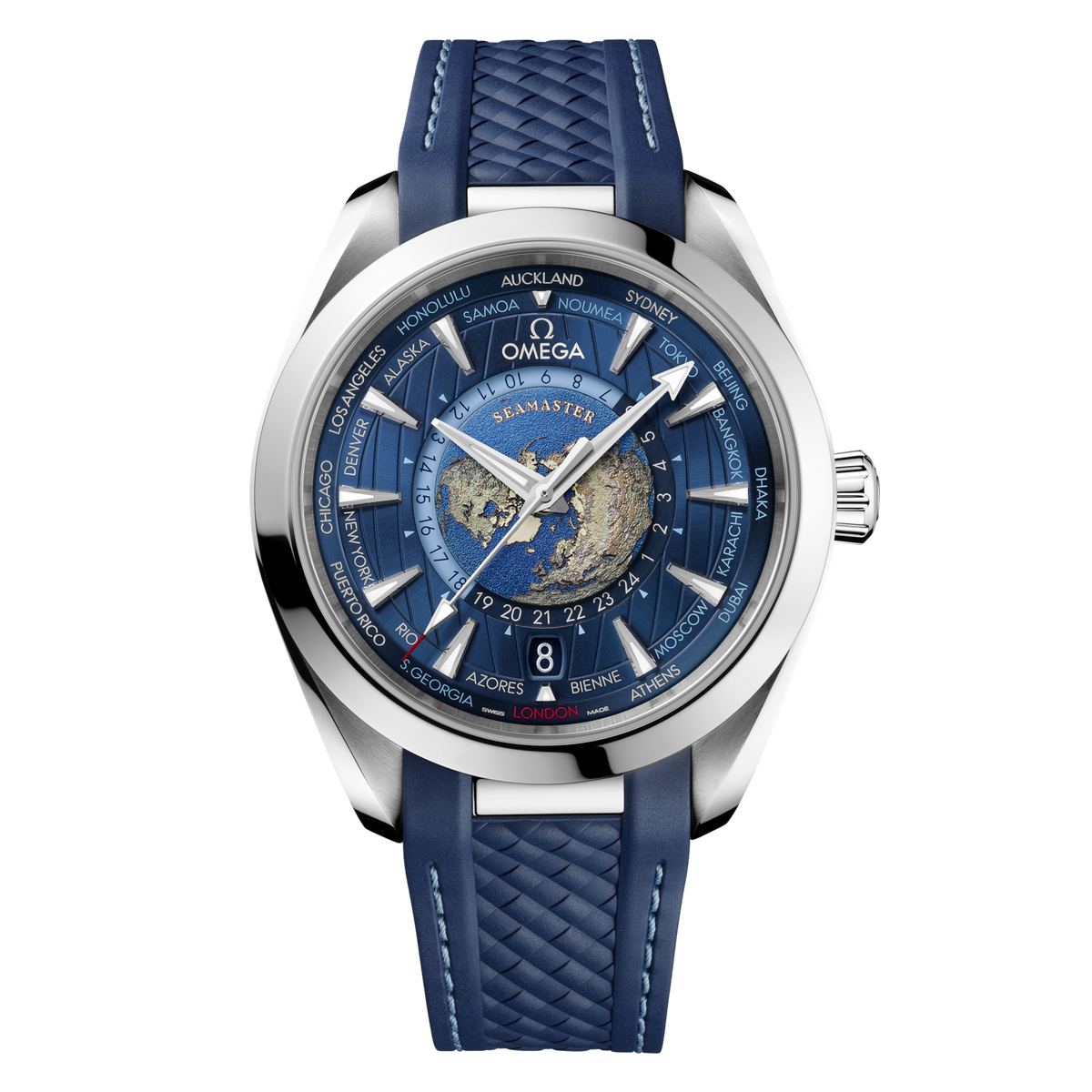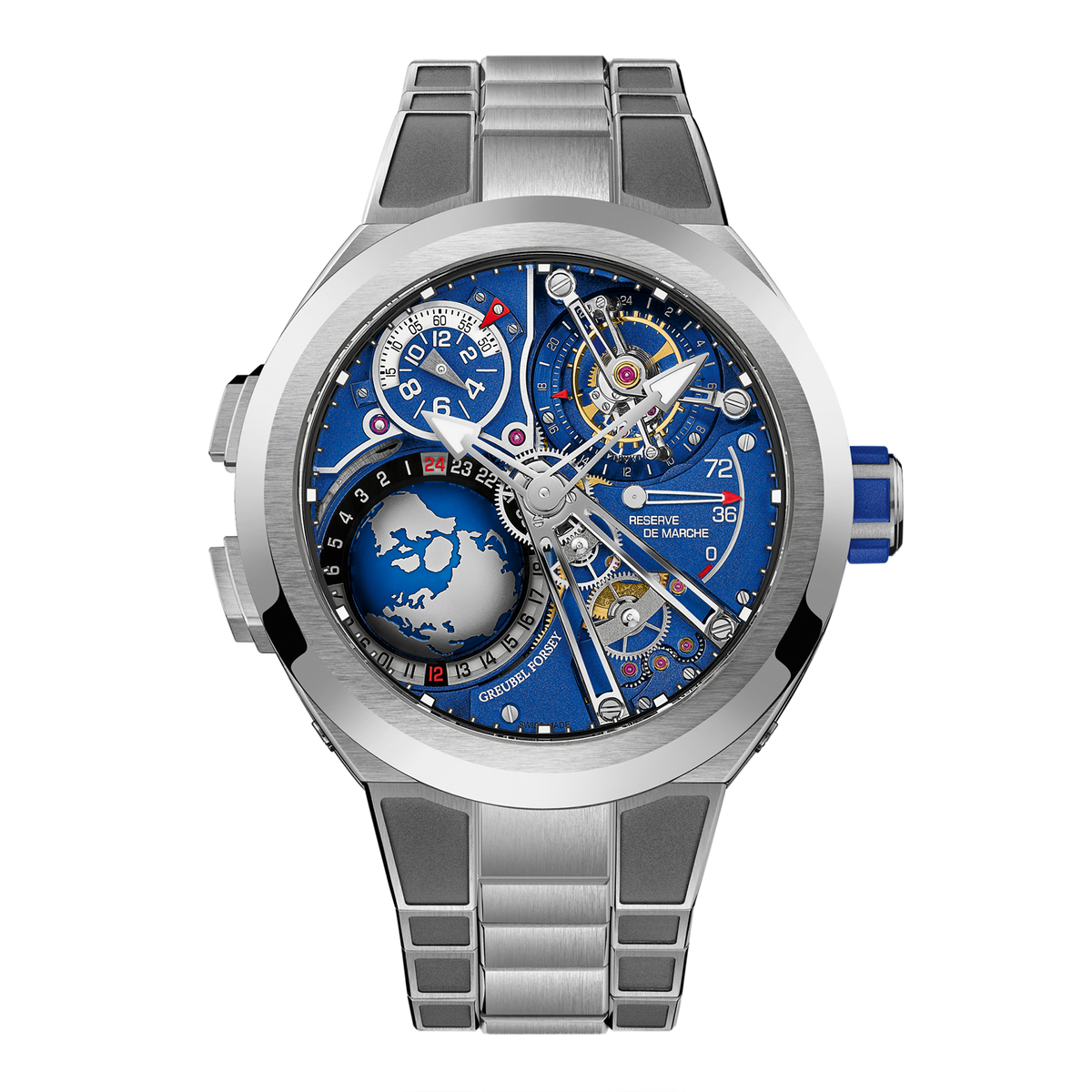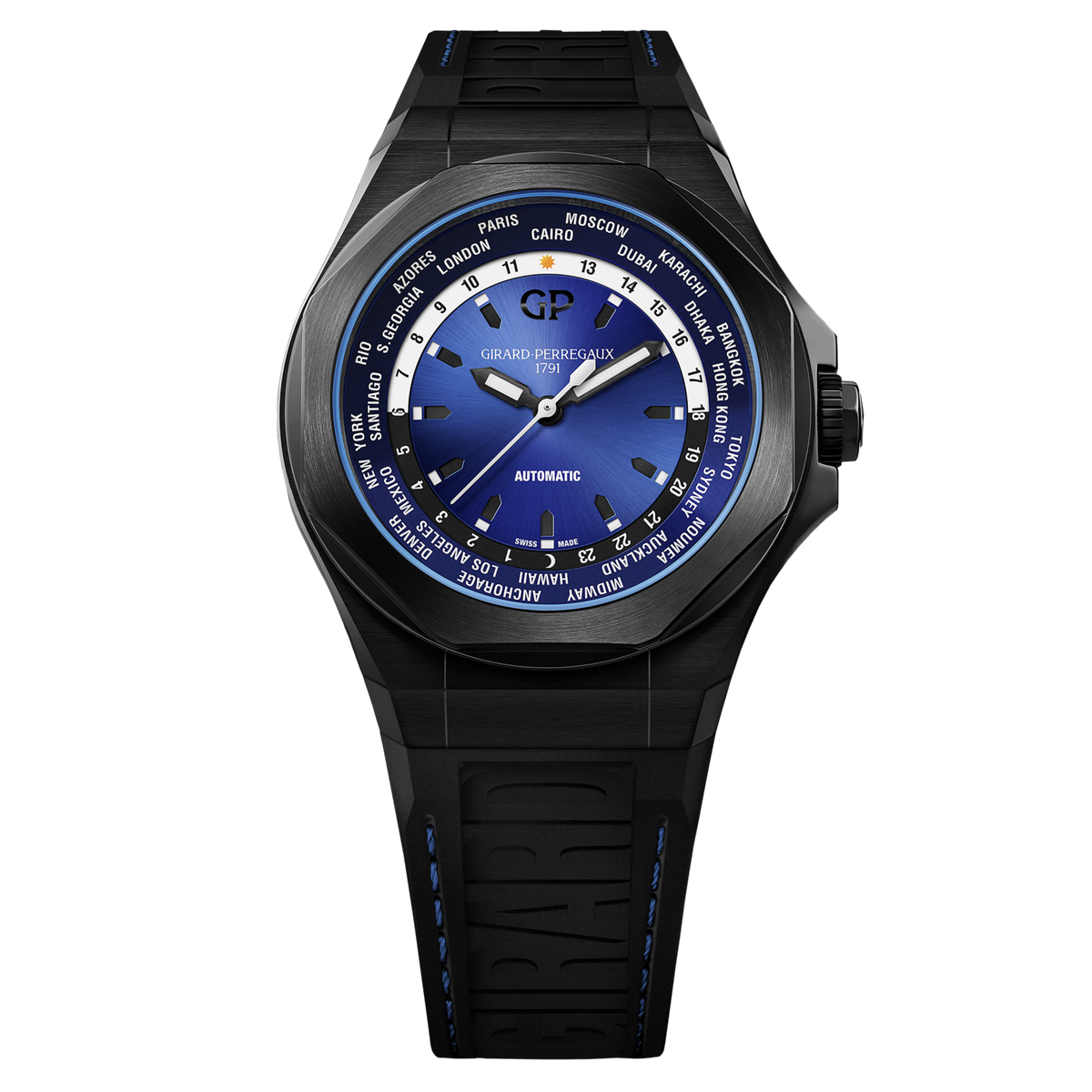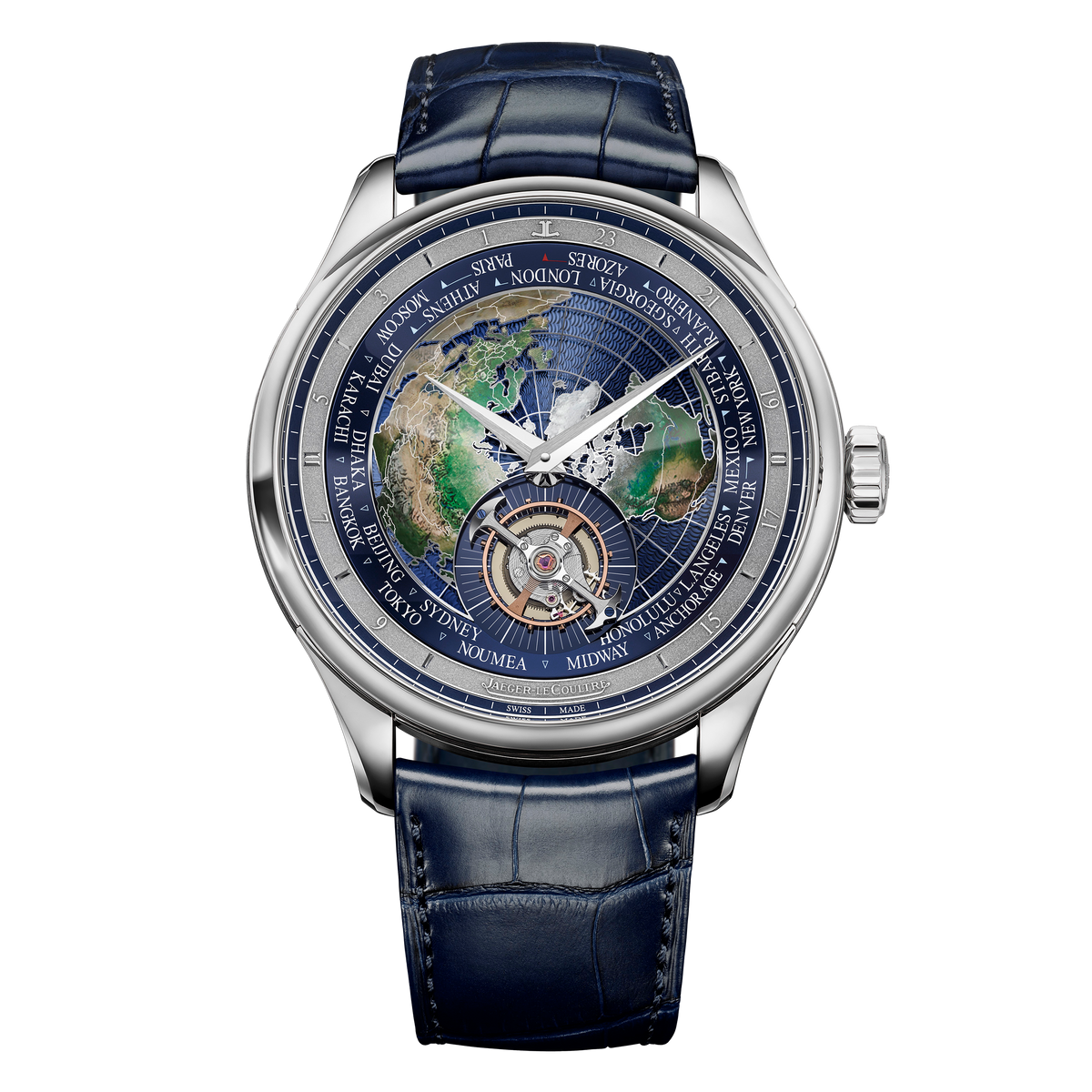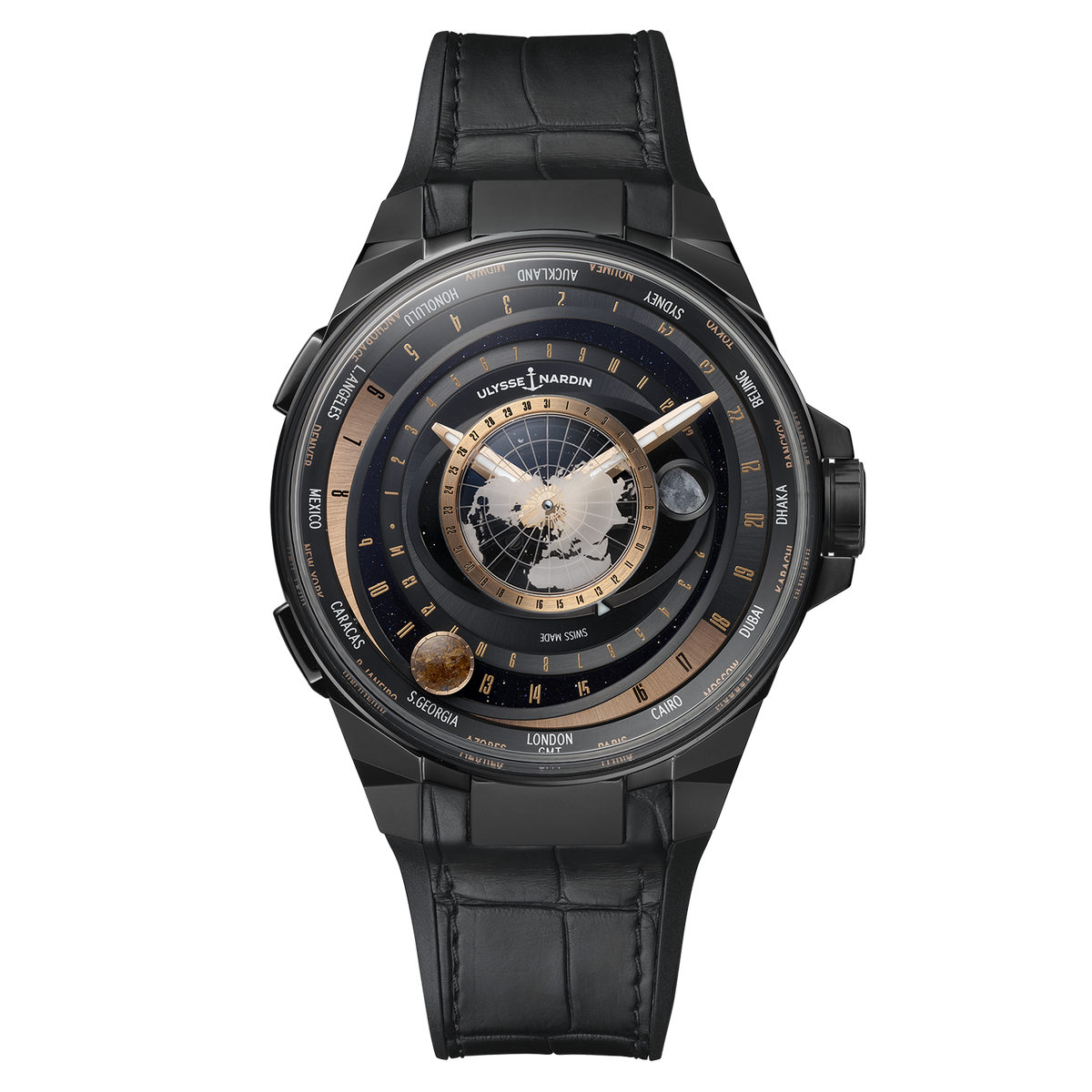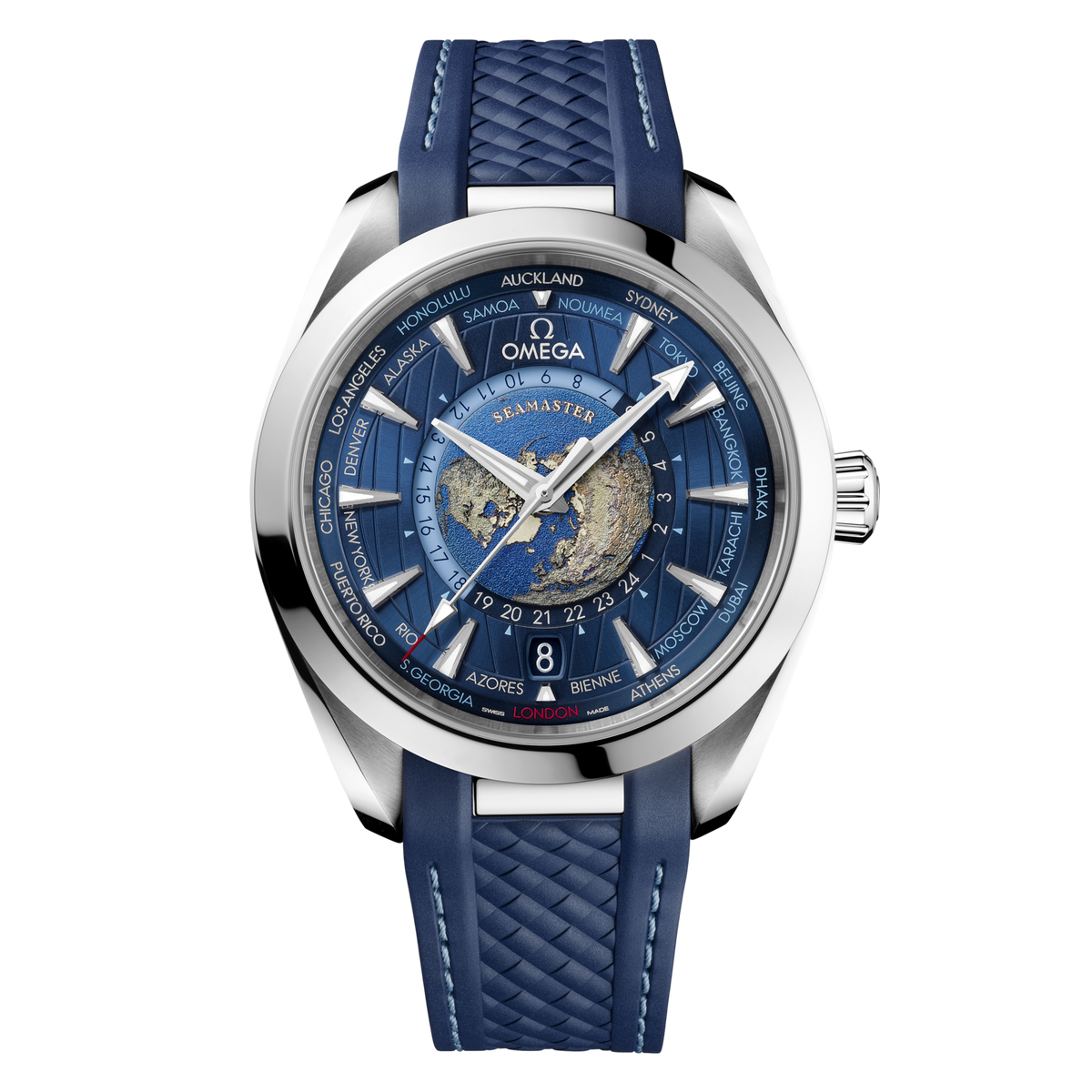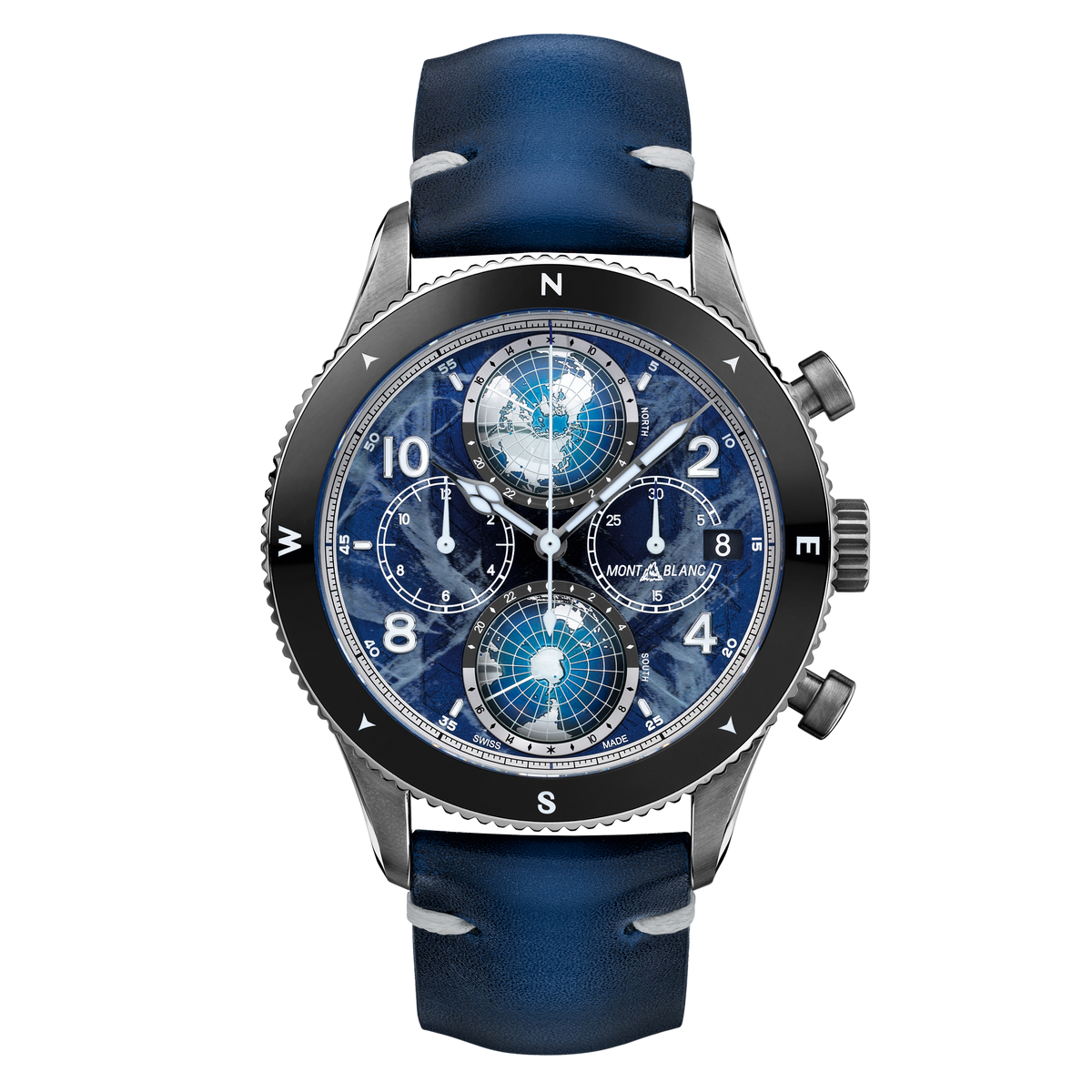A world time watch (sometimes referred to as a worldtimer) is a visual and technical solution for simultaneously telling the time in 24 time zones around the globe in relation to local time. More often than not, these time zones are represented by a major city or place within the zone in question. Over the years, the majority of brands have adopted the same references. They are London (GMT), Paris (GMT+1), Istanbul (GMT+2), Moscow (GMT+3), Dubai (GMT+4), Karachi (GMT+5), Dhaka (GMT+6), Bangkok (GMT+7), Beijing (GMT+8), Tokyo (GMT+9), Sydney (GMT+10), Nouméa (GMT+11), Auckland (GMT+12), Midway (GMT-11), Hawaii (GMT-10), Anchorage (GMT-9), Los Angeles (GMT-8), Denver (GMT-7), Mexico (GMT-6), New York (GMT-5), Santiago (GMT-4), Rio (GMT-3), South Georgia (GMT-2) and Azores (GMT-1). Add to this the 13 countries whose time zone is offset by less than one hour, such as Nepal (GMT+5.45) or Venezuela (GMT-4.30), and this brings the total number of time zones to thirty-seven.
A world time display is structured around three concentric components: a 24-hour disc, a cities disc and a day/night indicator. Using an additional pusher (or in some cases the crown), the wearer rotates the city disc until the local city aligns with a fixed pointer at 12 or 6 o'clock. At the same time as the city disc is turned, both the hour hand and the 24-hour disc move in one-hour increments.
The day/night indicator can take several forms. The simplest solution is to divide the 24-hour disc into two differently coloured halves: white between 6am and 6pm for daytime and black between 6pm and 6am for night-time. A more sophisticated interpretation of recent years is the addition, in the centre of the dial, of a planisphere seen from above one of the poles (usually the North Pole), engraved on a sapphire crystal disc. Placed underneath, a second disc with light and dark shading rotates with the 24-hour disc to indicate daytime and night-time at different points around the globe, through the transparent crystal.
